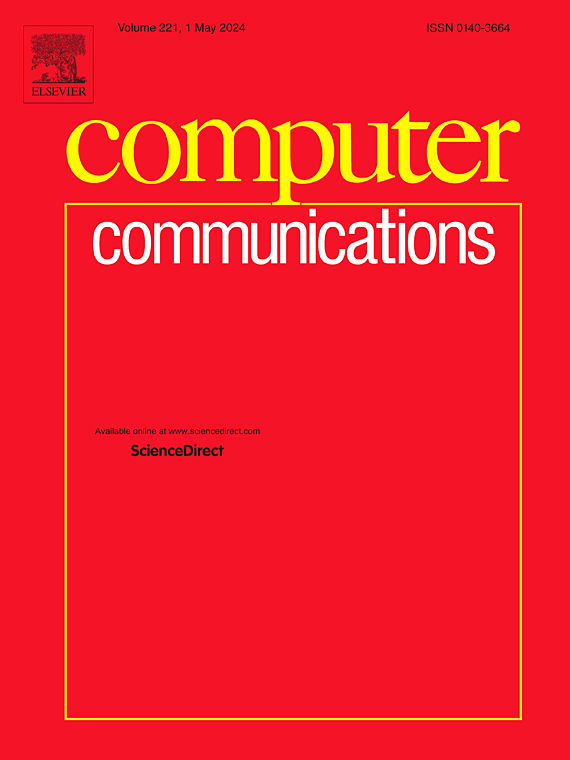Allocation of computing resources based on multi-objective strategy and performance improvement in 5G networks
IF 4.5
3区 计算机科学
Q1 COMPUTER SCIENCE, INFORMATION SYSTEMS
引用次数: 0
Abstract
The increase in mobile communication has escalated network load, necessitating more intelligent resource management in 5G and forthcoming networks. This research introduces a novel methodology to enhance network performance by integrating bird swarm optimization (BSO) with deep learning (DL). We investigate a configuration in which several users inside a single cell solicit services from proximate edge servers and remote cloud servers, employing Non-Orthogonal Multiple Access (NOMA) to optimize radio spectrum utilization. BSO, influenced by avian flocking patterns, aggregates users and distributes workloads among servers to reduce energy consumption, service latency, and operational expenses. Simultaneously, DL examines historical network data to forecast traffic and user requirements, enabling BSO to make immediate, educated decisions. We utilize queuing theory to model this system, addressing a complicated optimization problem that concurrently reduces energy, latency, and costs. In contrast to conventional solutions, our technology dynamically adjusts to fluctuating network conditions, providing an effective remedy for the requirements of 5G. Simulations demonstrate that the integrated BSO-DL approach diminishes energy usage, delays, and expenses by around 54 %, substantiating its efficacy in improving broadband performance. This research facilitates the development of more efficient and sustainable 5G networks, addressing the increasing demands of contemporary mobile communication through a scalable and intelligent approach.
5G网络中基于多目标策略的计算资源分配与性能提升
移动通信的增加增加了网络负载,需要在5G和即将到来的网络中进行更智能的资源管理。本研究提出了一种将蜂群优化(BSO)与深度学习(DL)相结合来提高网络性能的新方法。我们研究了一种配置,其中单个小区内的几个用户从近处边缘服务器和远程云服务器请求服务,采用非正交多址(NOMA)来优化无线电频谱利用率。BSO受鸟群模式的影响,聚合用户并在服务器之间分配工作负载,以降低能耗、服务延迟和运营成本。同时,DL检查历史网络数据以预测流量和用户需求,使BSO能够立即做出明智的决策。我们利用排队理论对该系统进行建模,解决了一个复杂的优化问题,同时降低了能量、延迟和成本。与传统解决方案相比,我们的技术可以根据波动的网络条件进行动态调整,为5G的需求提供有效的补救措施。仿真表明,集成的BSO-DL方法减少了约54%的能源使用、延迟和费用,证实了其在提高宽带性能方面的有效性。这项研究有助于开发更高效和可持续的5G网络,通过可扩展和智能的方法满足当代移动通信日益增长的需求。
本文章由计算机程序翻译,如有差异,请以英文原文为准。
求助全文
约1分钟内获得全文
求助全文
来源期刊

Computer Communications
工程技术-电信学
CiteScore
14.10
自引率
5.00%
发文量
397
审稿时长
66 days
期刊介绍:
Computer and Communications networks are key infrastructures of the information society with high socio-economic value as they contribute to the correct operations of many critical services (from healthcare to finance and transportation). Internet is the core of today''s computer-communication infrastructures. This has transformed the Internet, from a robust network for data transfer between computers, to a global, content-rich, communication and information system where contents are increasingly generated by the users, and distributed according to human social relations. Next-generation network technologies, architectures and protocols are therefore required to overcome the limitations of the legacy Internet and add new capabilities and services. The future Internet should be ubiquitous, secure, resilient, and closer to human communication paradigms.
Computer Communications is a peer-reviewed international journal that publishes high-quality scientific articles (both theory and practice) and survey papers covering all aspects of future computer communication networks (on all layers, except the physical layer), with a special attention to the evolution of the Internet architecture, protocols, services, and applications.
 求助内容:
求助内容: 应助结果提醒方式:
应助结果提醒方式:


